This is probably the only shrine we visited in Kyoto, even during our month-long stay in Japan.
Fushimi Inari is a huge tourist spot in Kyoto, so it’s usually full and crowded. We made sure to arrive earlier than usual. After our slow walking trip to Arashimaya, we headed to Fushimi Inari.
We arrived around 8 AM; surprisingly, many tourists were already there. Thankfully, the tour buses weren’t there yet (lol). We started the walk up with our usual routine—Kobe beef cubes! We know it’s more expensive here, but we just had to do it, haha!
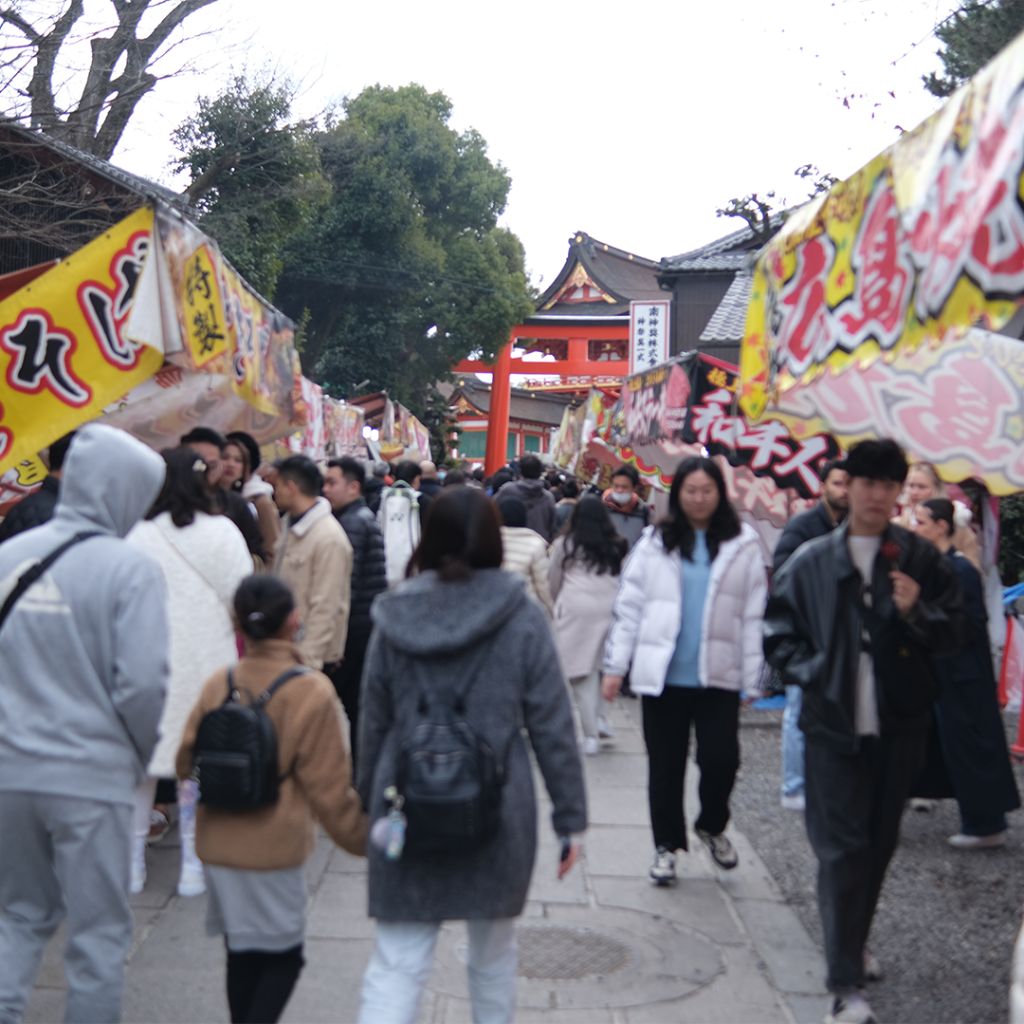
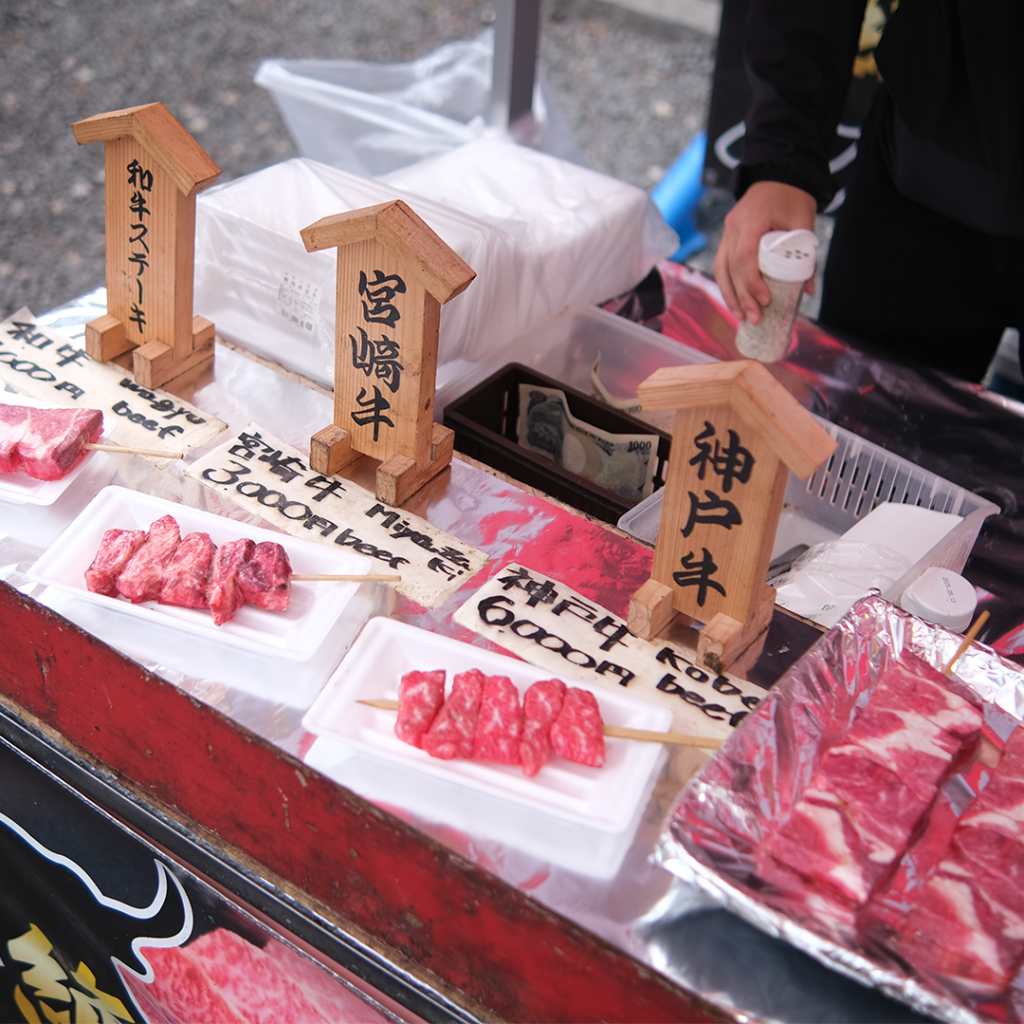
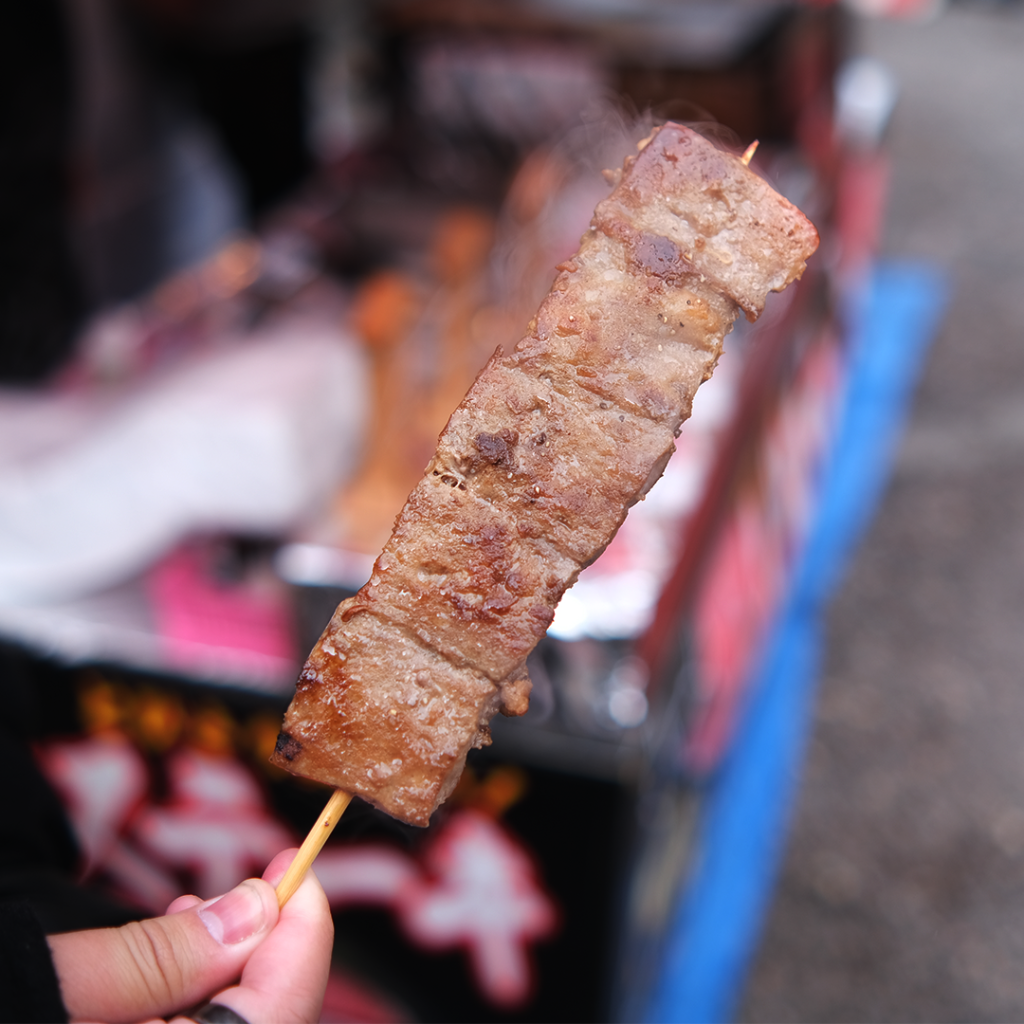
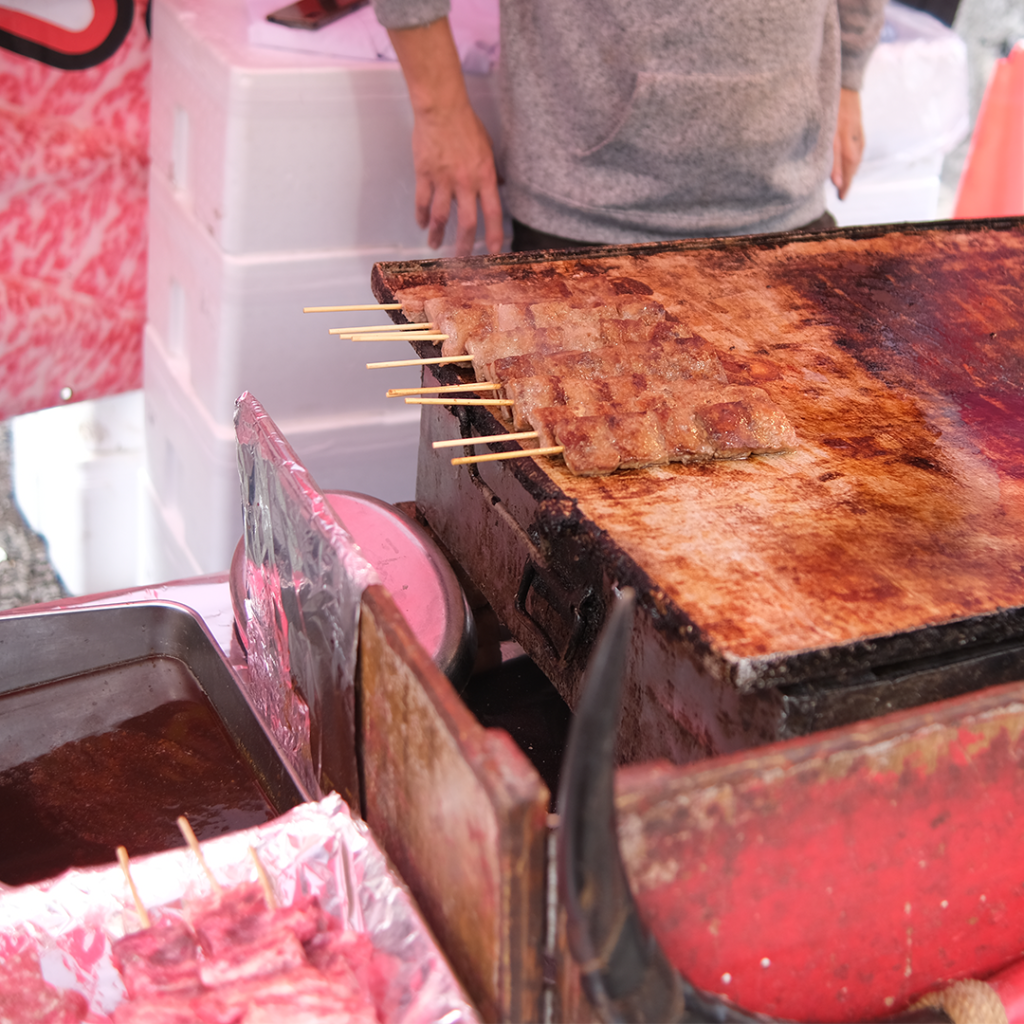
Fushimi Inari is one of the most revered shrines in Japan. It’s famous for its torii gates leading up to the woodlands of sacred Mt. Inari and the Inari shrine at the top. Everything starts at the flat grounds with the big Inari gate, other shrines, and prayer halls.
These torii gates are said to have been symbolic of the gates to heaven, sort of a tunnel to the sacred land. Inside these gates, it’s said that you stand in a sacred Shinto space, and every step brings you closer to Inari, the god of bountiful blessings and business success.
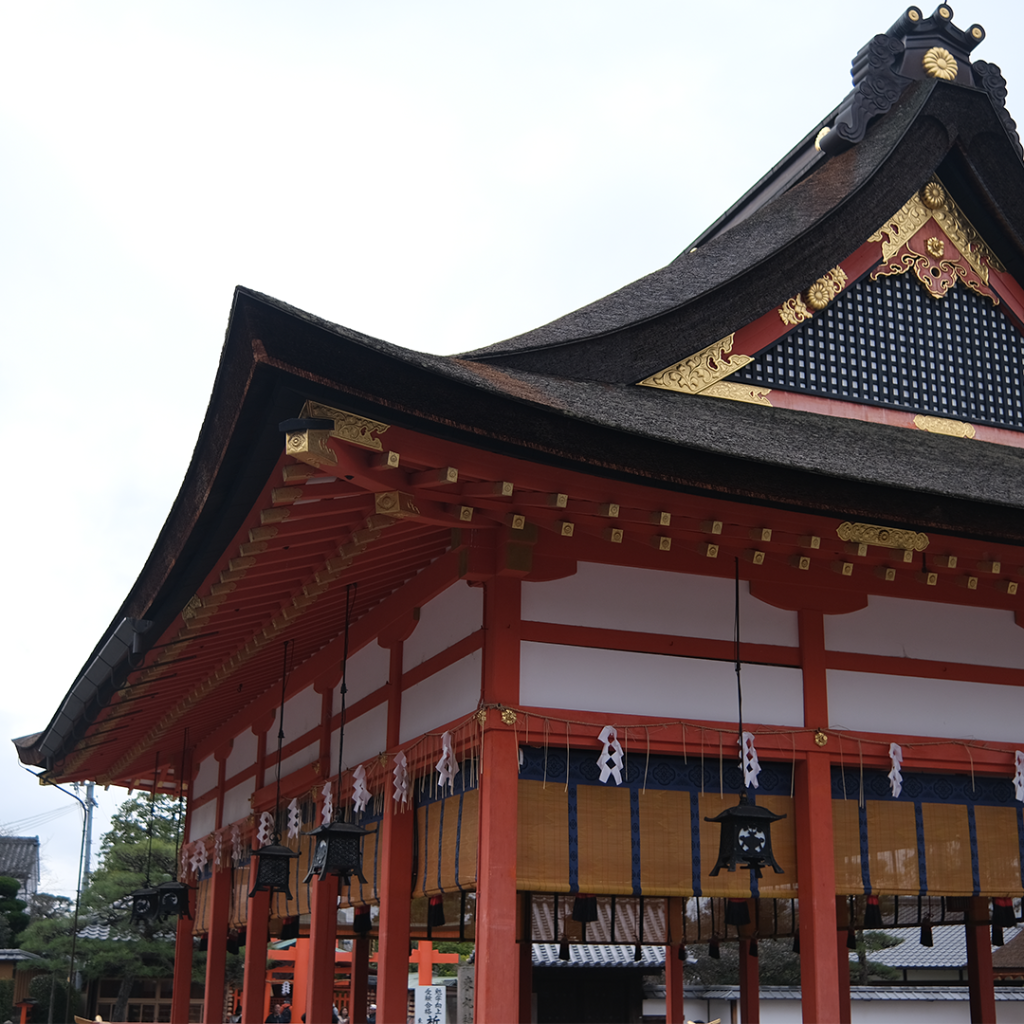
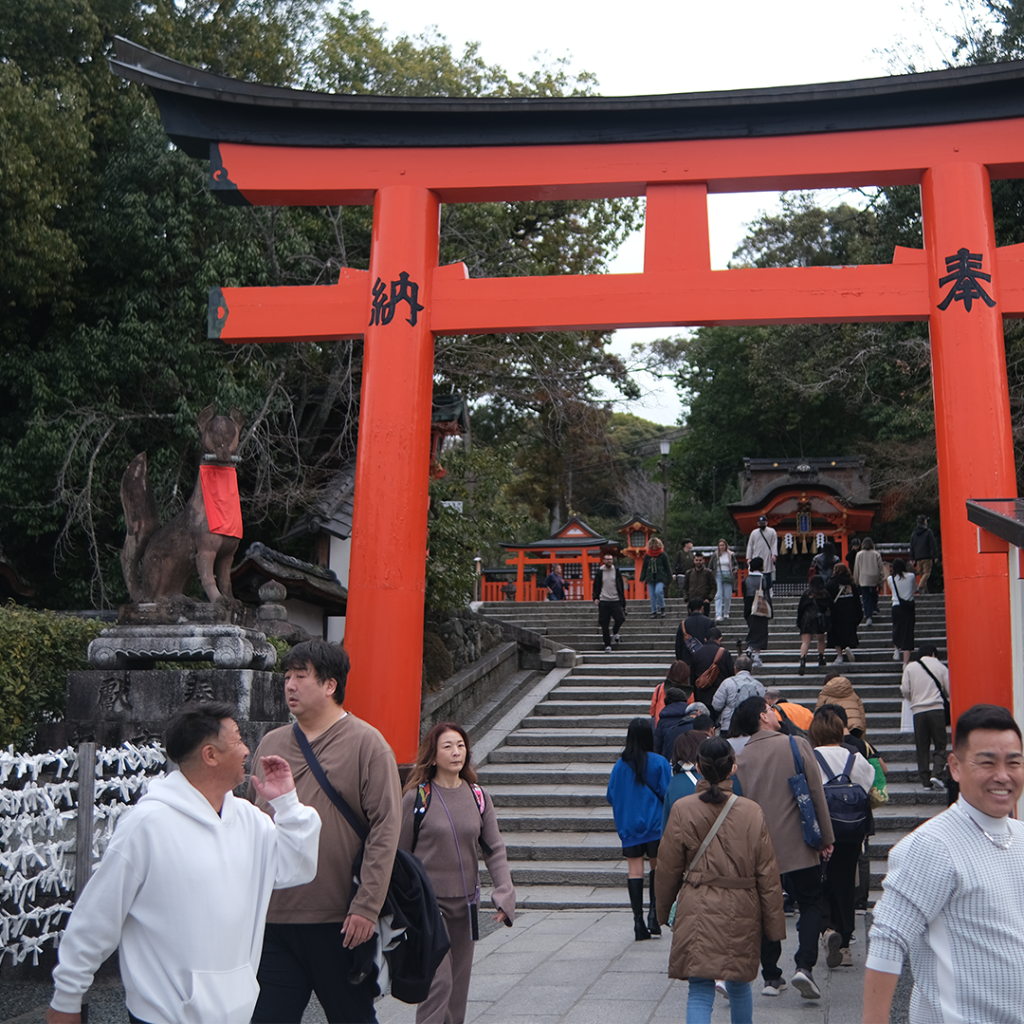
The Senbon Torii
The series of thousand torii gates were donated by various business owners, forming sort of a tunnel. This is probably the most famous tourist spot in the shrine area. Most of the time, this area is filled with tourists and it would be hard to take photos. Our recommendation is to walk further into the gates for your OOTDs!
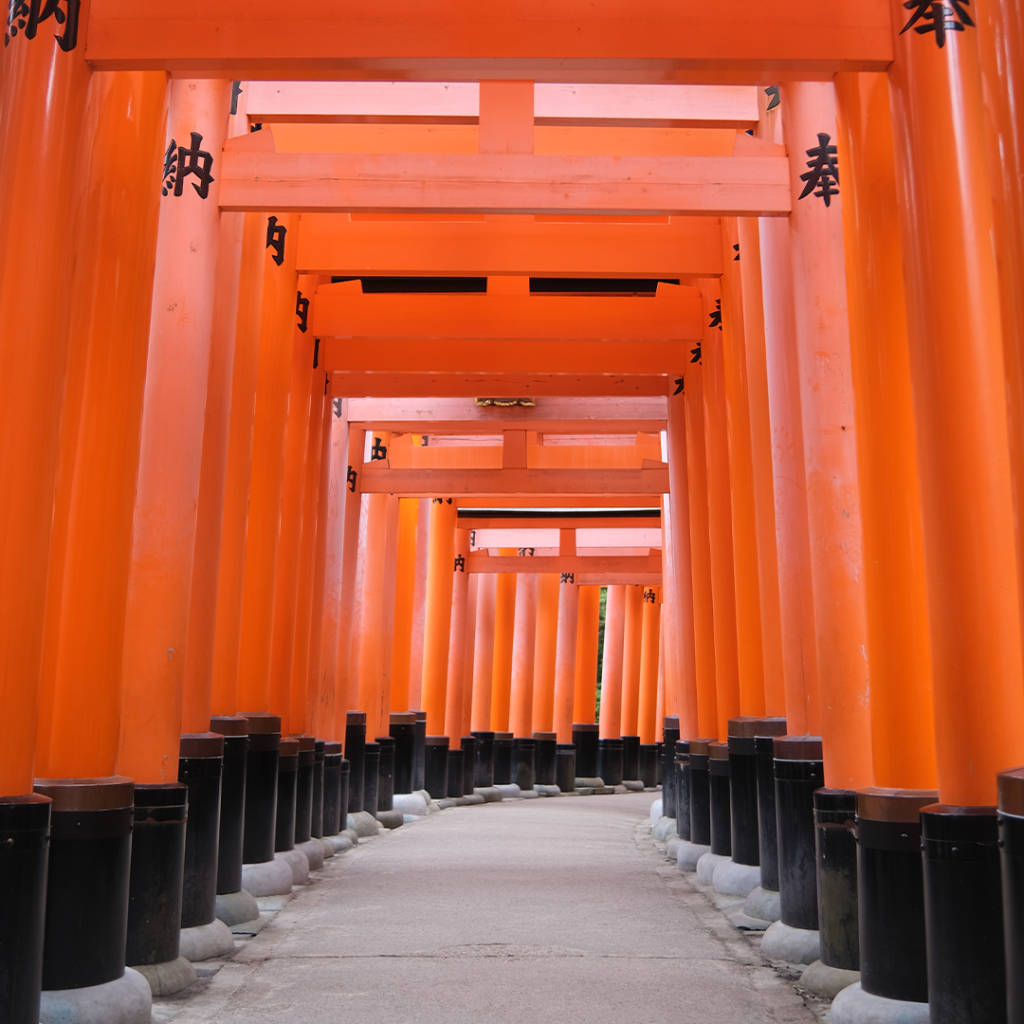
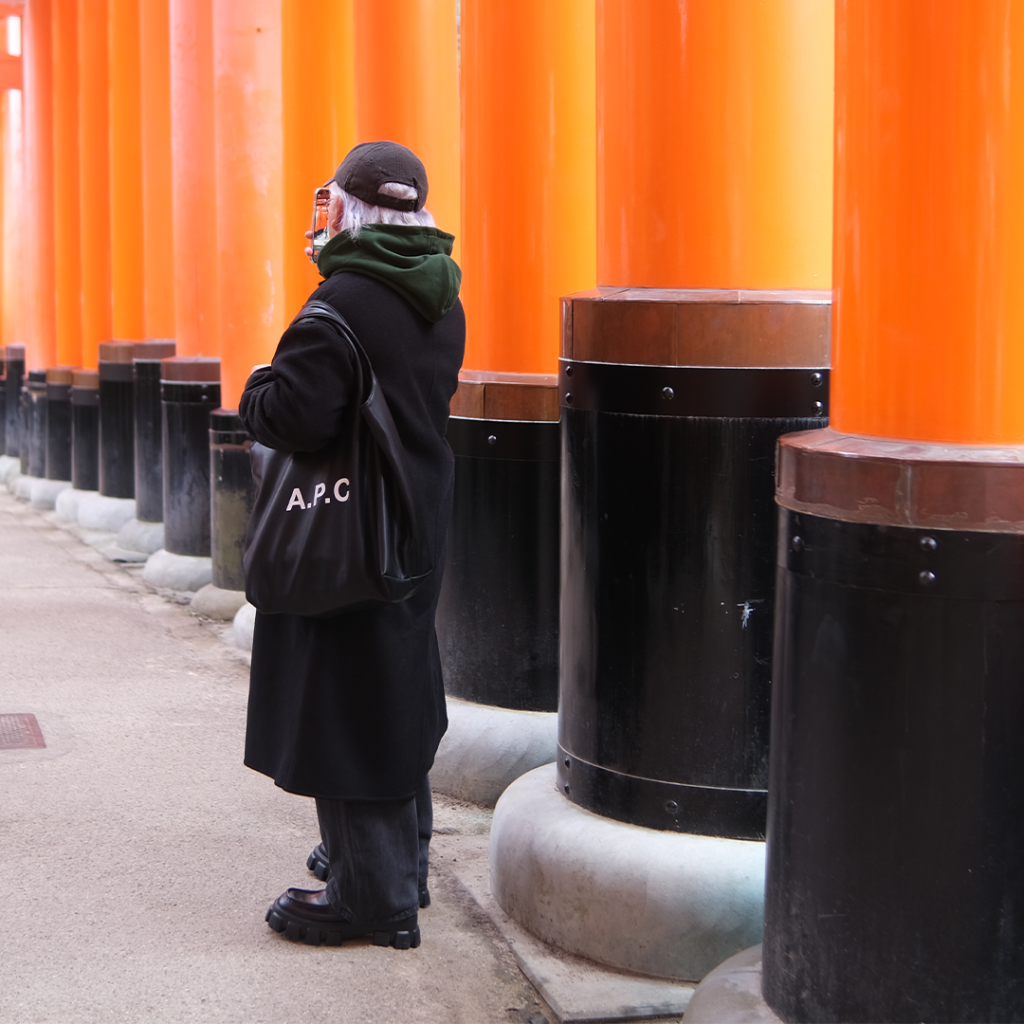
As you follow the trail further into the mountains, you’ll notice that the torii gates start to appear less vibrant, and the overall feeling becomes a bit darker and gloomier. Not that it means something bad; it just gives you a sense that you are actually walking deeper into the forests and woodlands of Mt. Inari. We love the serenity in these parts. There are even fewer tourists further up the pathways.
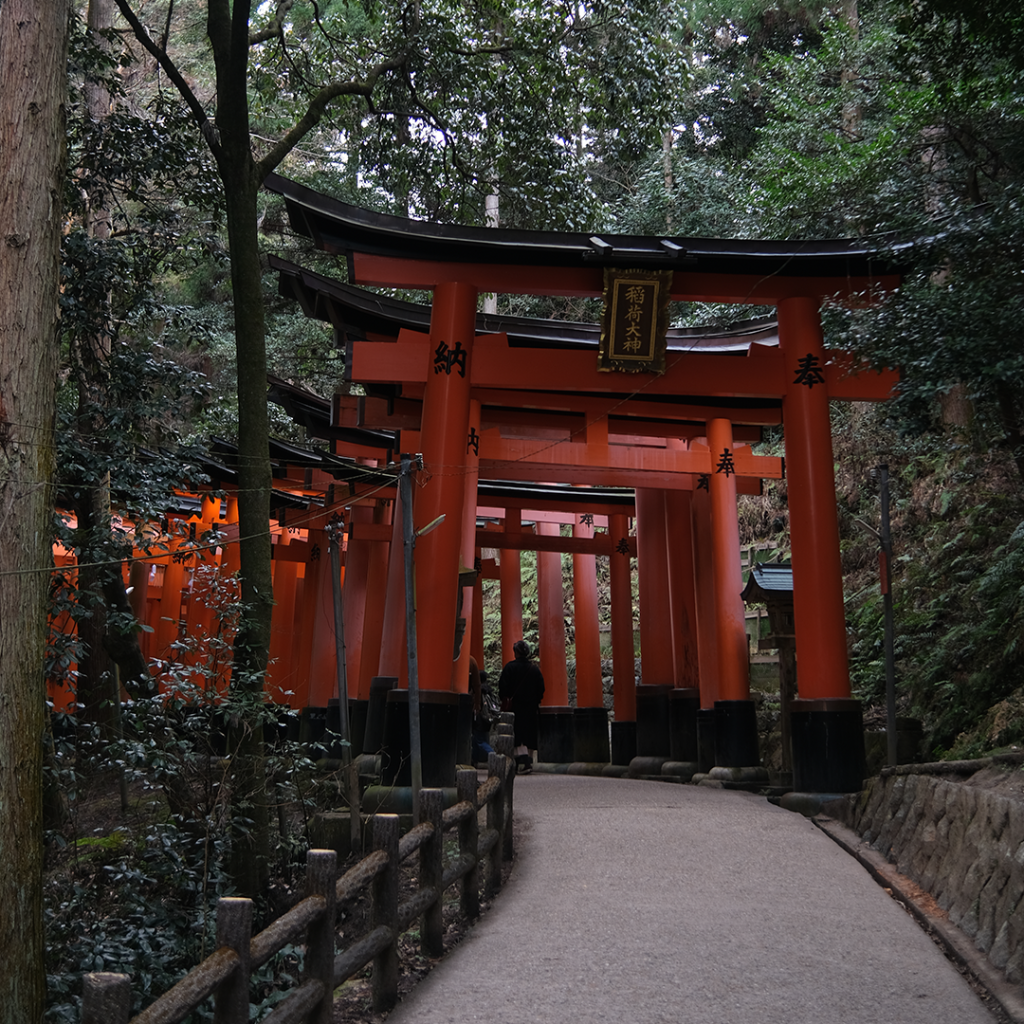
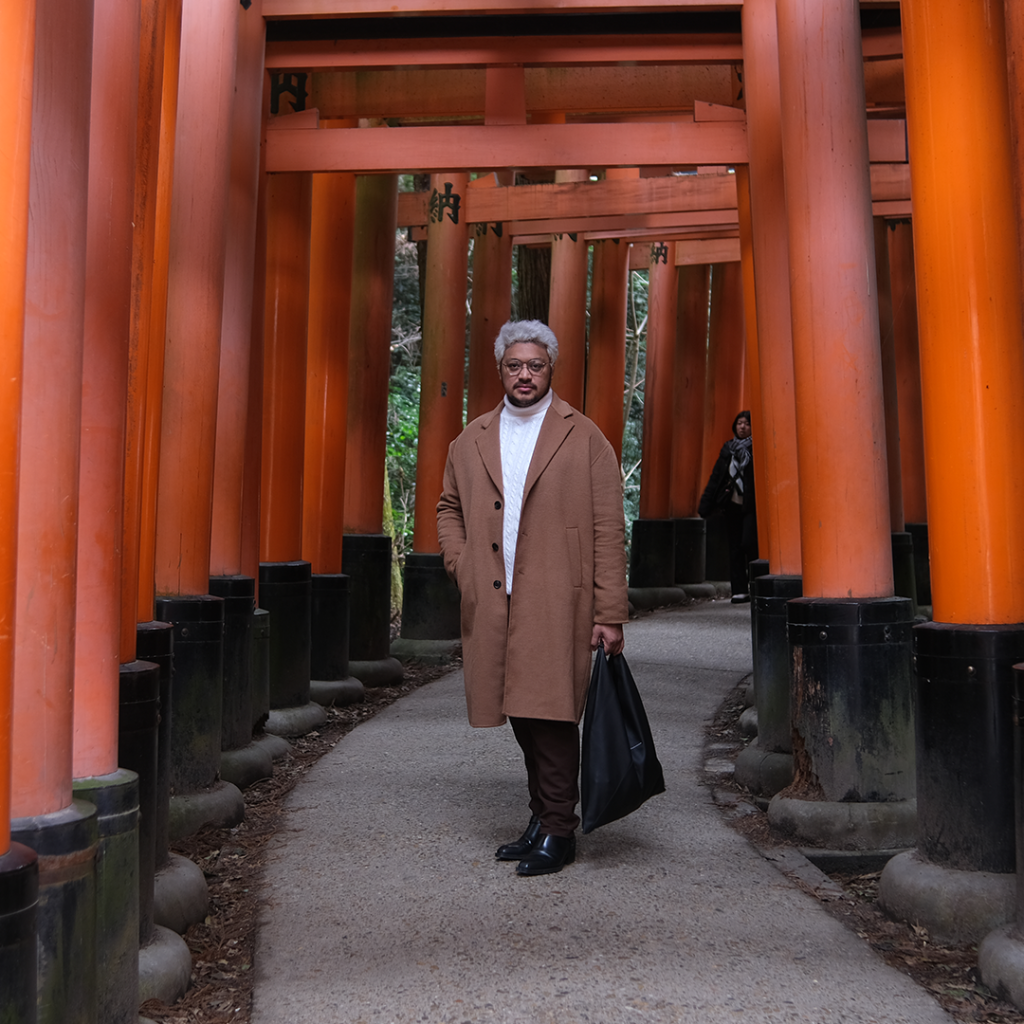
Walking deeper into the tunnel of torii gates, you will notice more shrines, smaller gates, and even secluded torii on the far end of the cliffs. We chanced upon some devotees hiking through Mt. Inari, stopping at smaller shrines along the way. You’ll see more of these pilgrims as you walk up the torii gates.
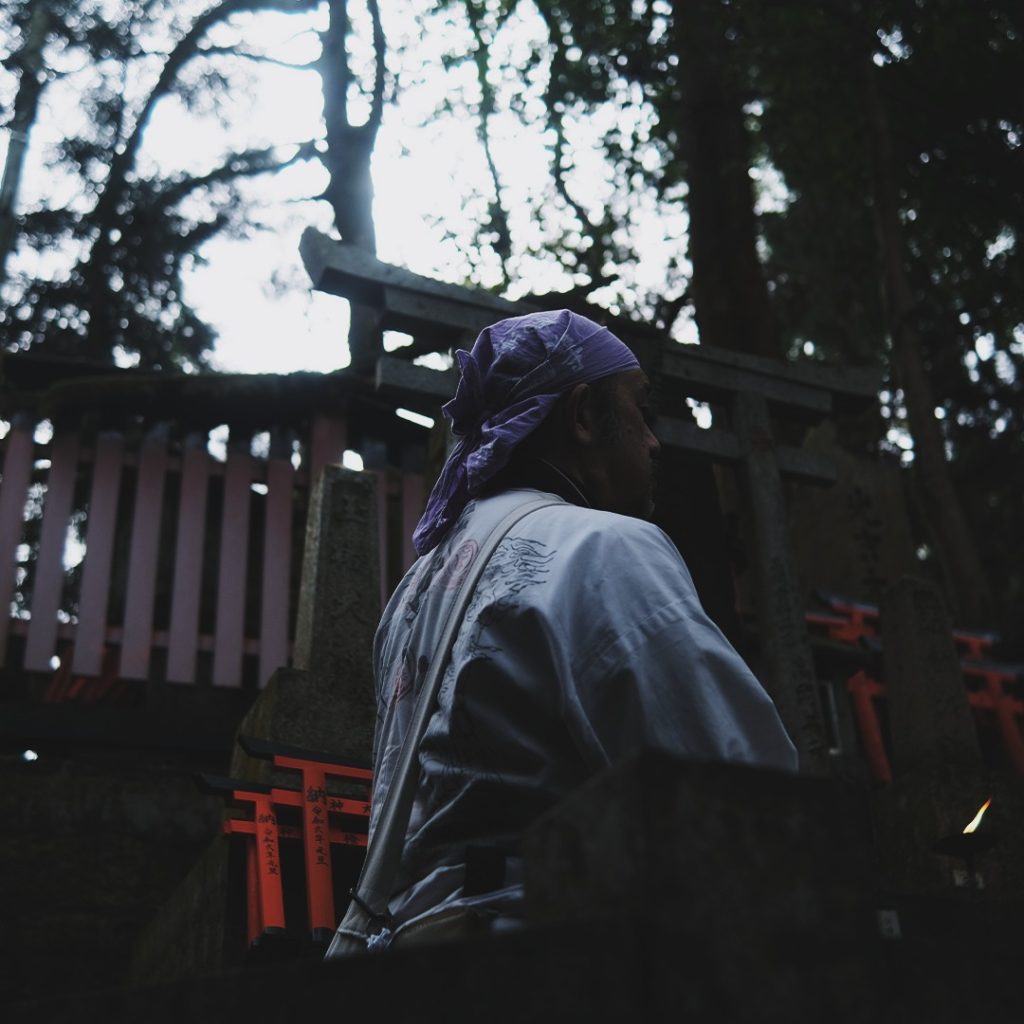
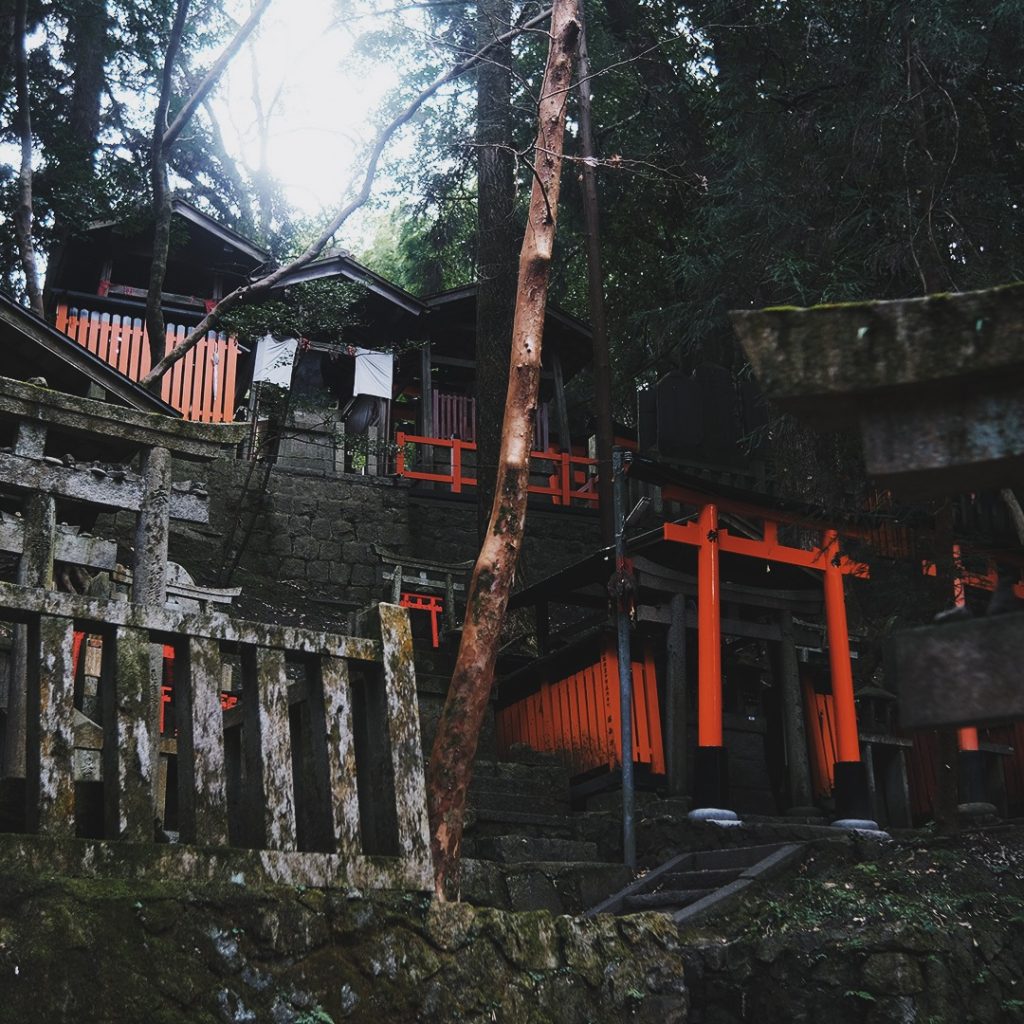
Further up, there are more pathways to take you to different stations and shrines, as well as some with breathtaking views. Going up, you’ll notice fewer and fewer orange gates and more neutrals, stones, and foliage wrapping around different shrines and prayer areas.
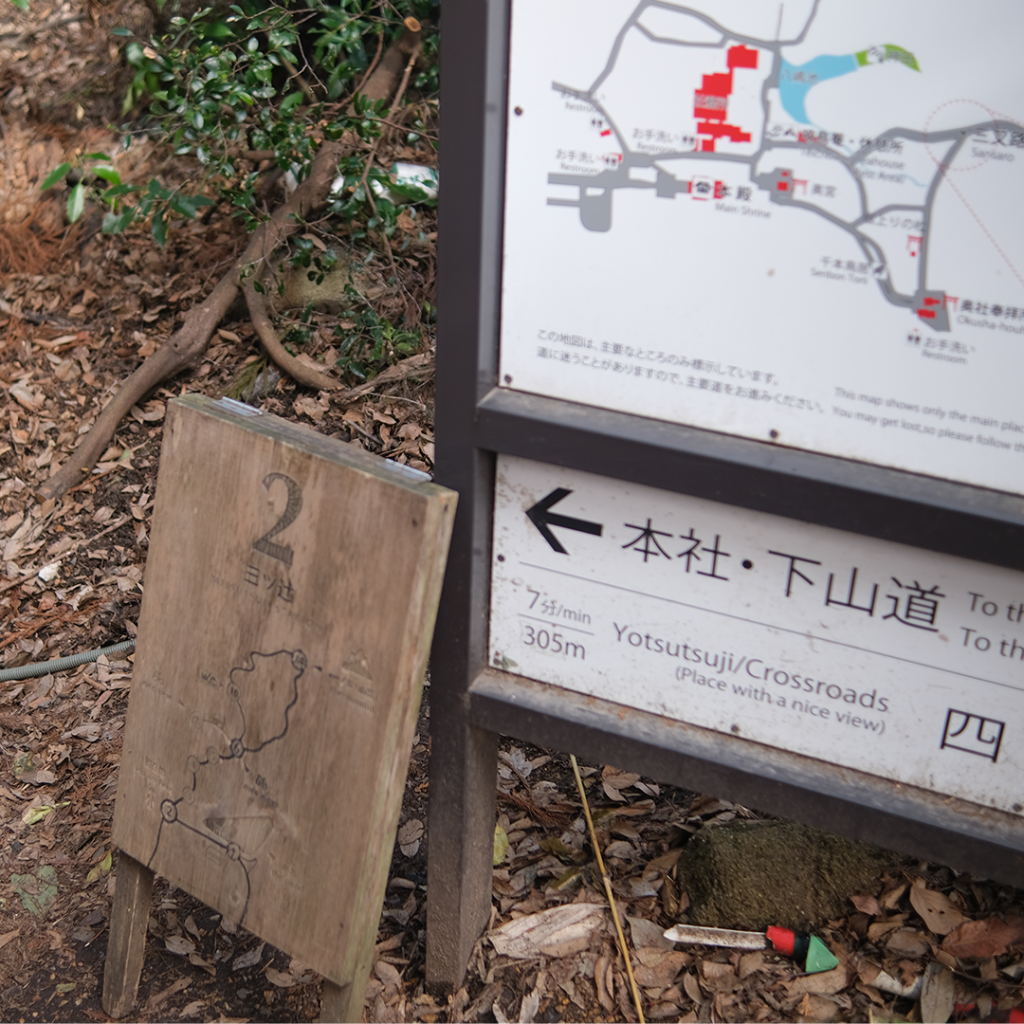
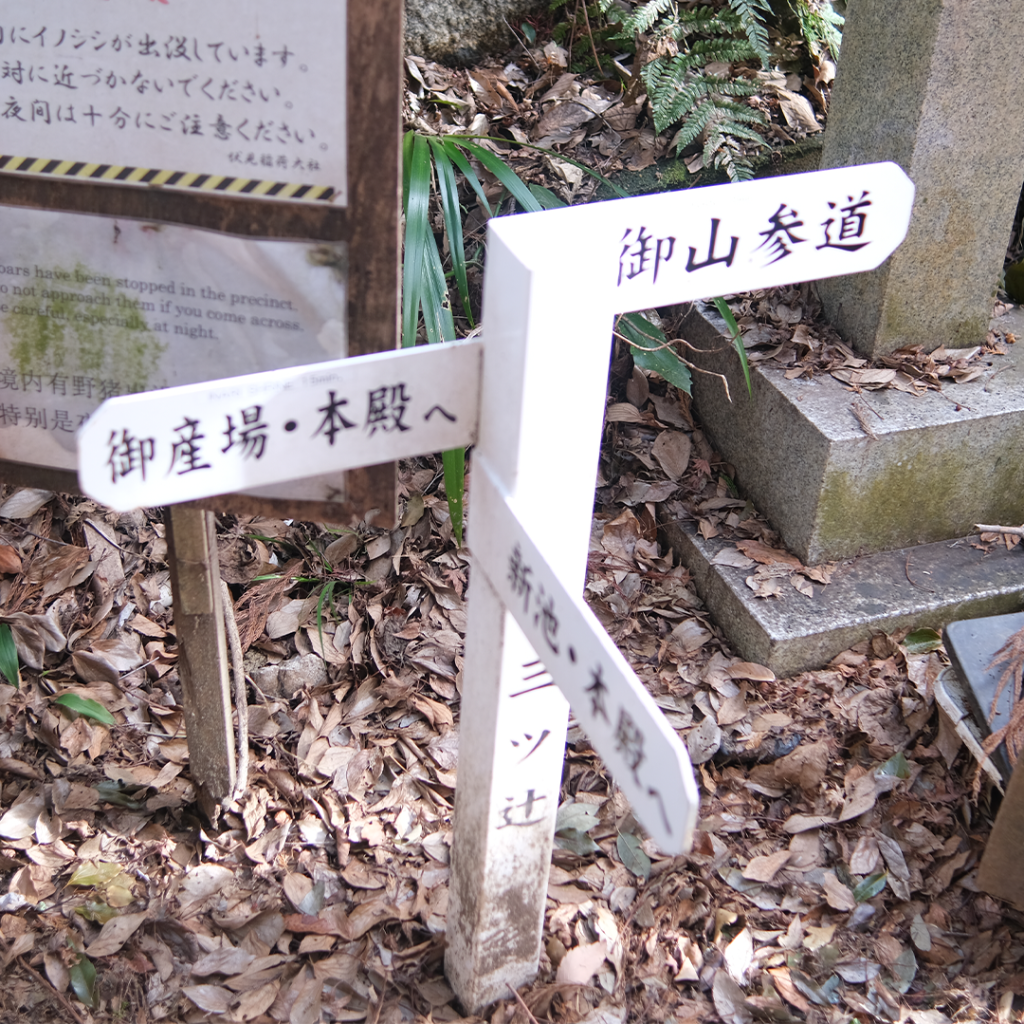
Kumataka-sha
We have reached the Kumataka-sha, the shrine of the Mountain Hawk-Eagle. In the past, people believed that hawk eagles flying across Mt. Inari were reincarnations of the gods.
This area has a nice view of a small lake in the middle of the mountain. An interesting legend says you need to clap in front of the lake, observe how the sound travels, and find the direction where it echoes back to you. It is said that you will find someone who has lost their way in this direction.
We didn’t try clapping. We’re afraid that someone (real or soul) might be lost, and we might have to finish the entire trail, which, at this point, we’re not sure if we can still hike through.
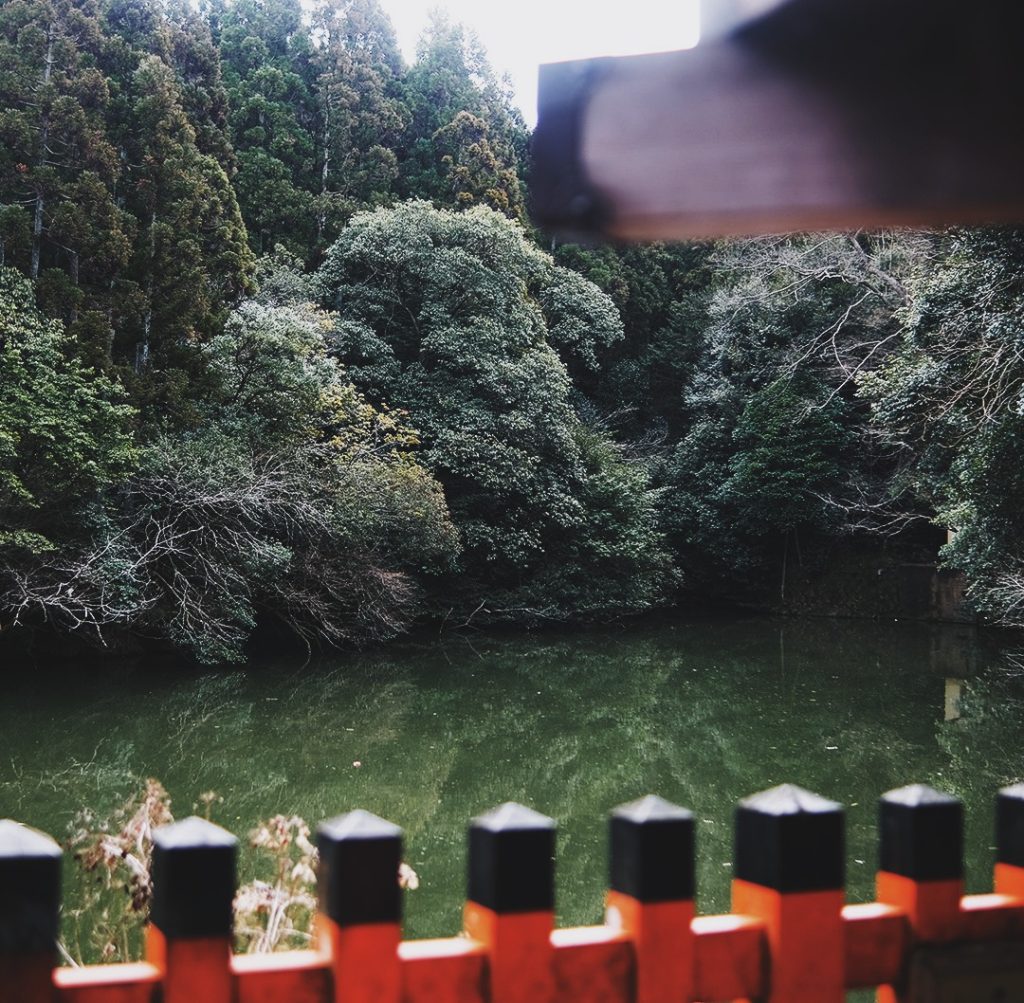

We still managed to climb up further. Steps and inclines are becoming steeper and steeper. We’re at least aiming to reach the Yotsusuji area, which is said to have a nice view of Kyoto.
A few more steps later, we returned and took a downhill path opposite the trail. We were just 10-15mins away from the main shrine, but our tired legs and the cold wind weren’t cooperating.
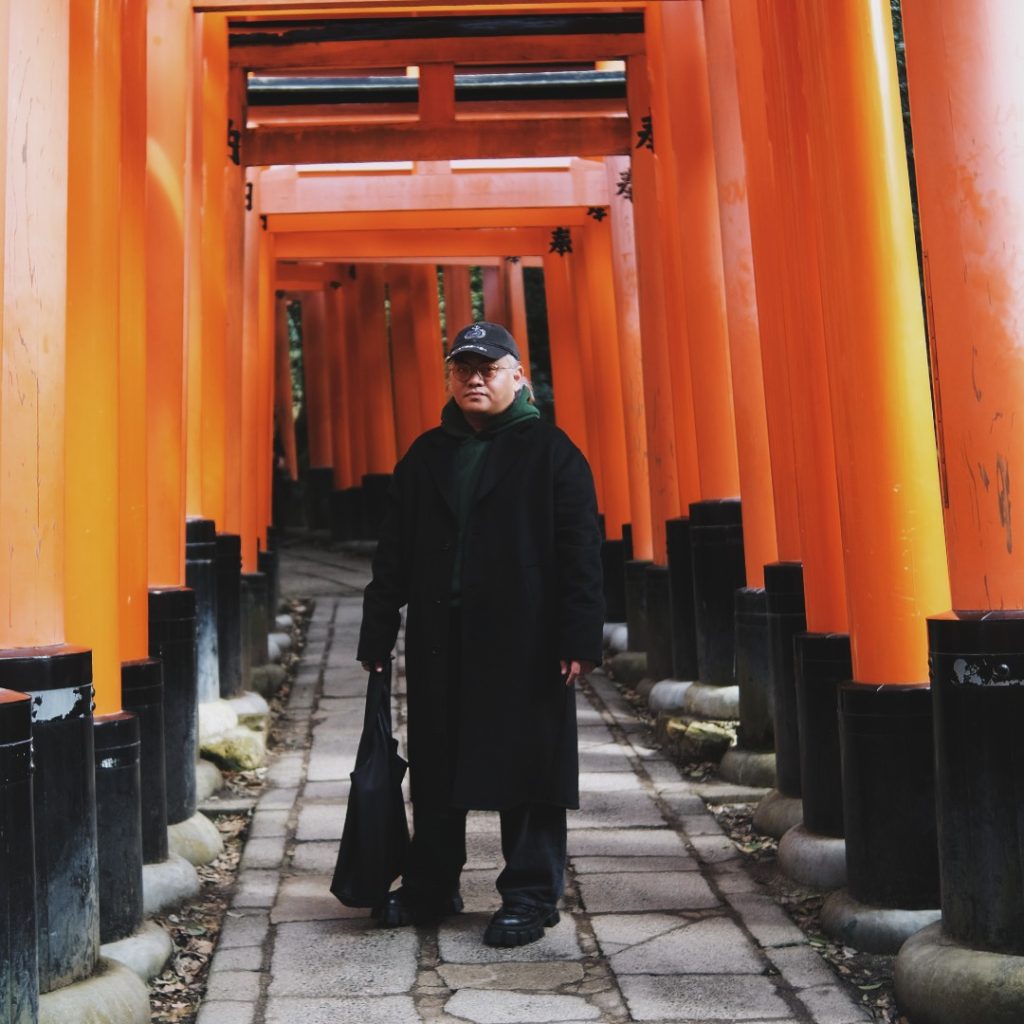
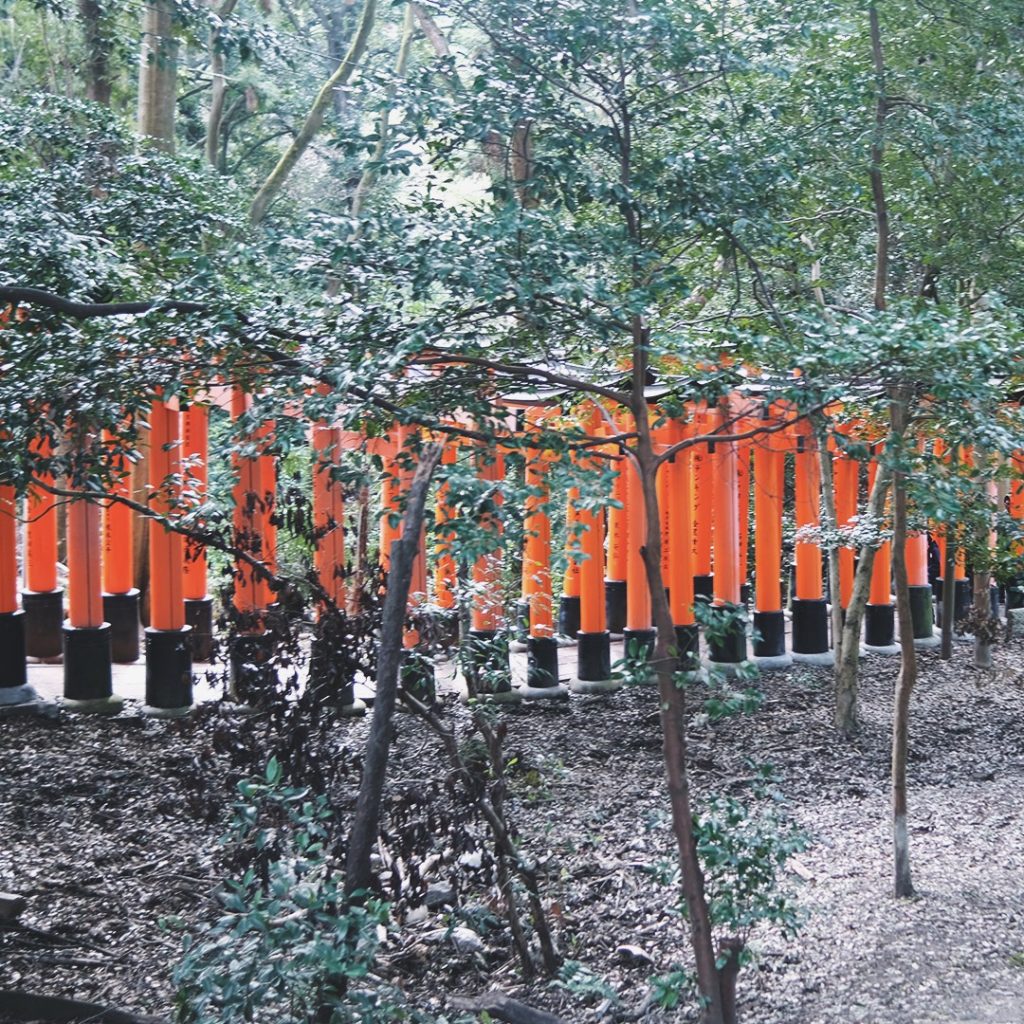
A trip downhill takes us to more shrines, some fat cat sightings, and a lot of Kitsune statues (white mystical foxes). It is believed that Kitsune are the messengers of the god Inari. They are often adorned with red bibs or things in their mouths. Each item in their mouth symbolizes the community’s wish—a scroll for wisdom, a key for unlocking bountiful blessings, rice for a good harvest, and more.
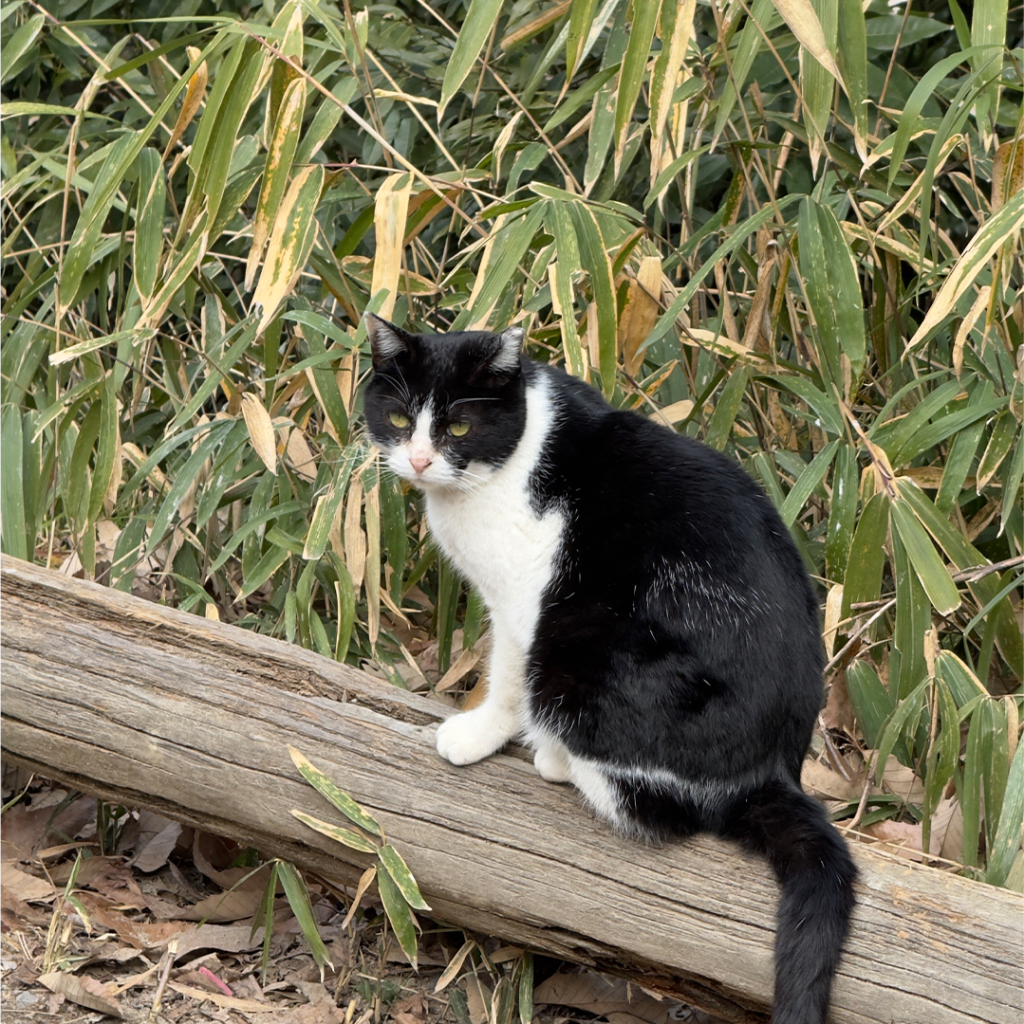
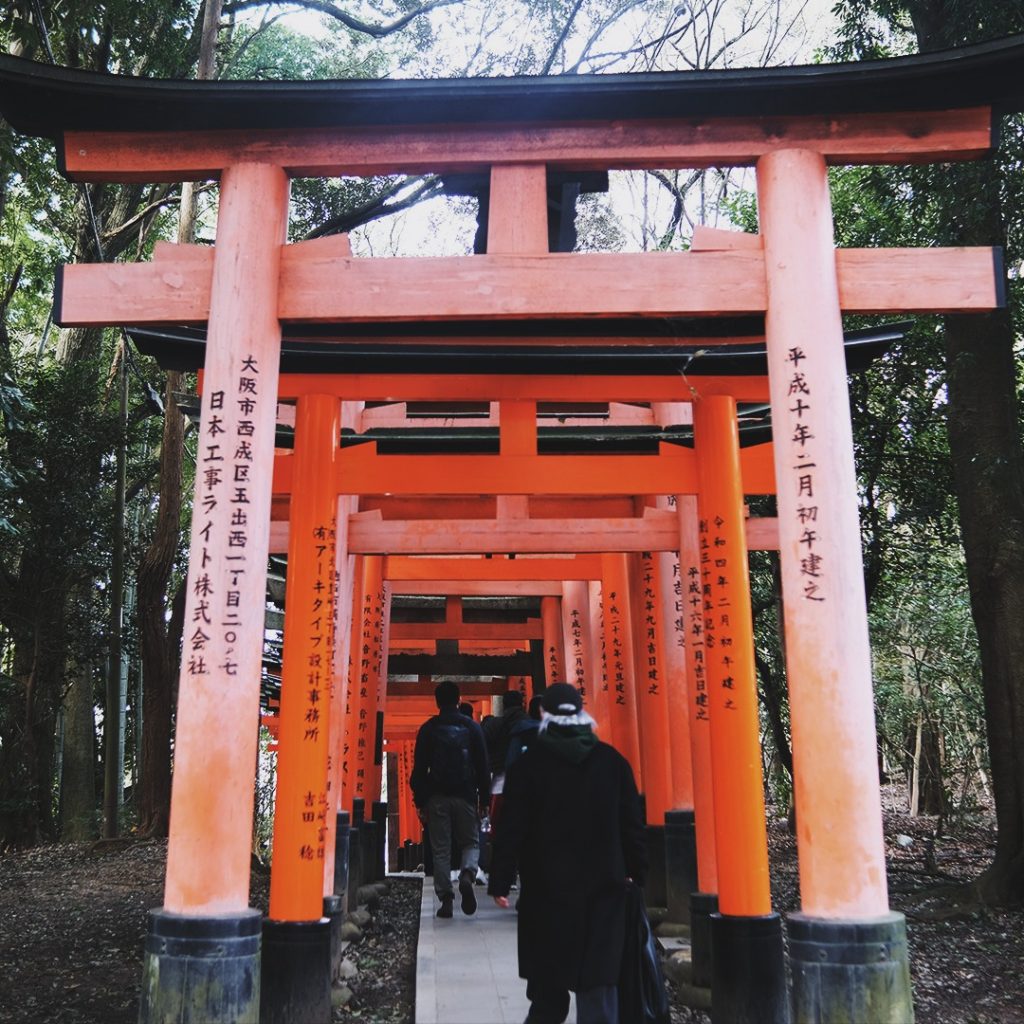
Passing through each pathway and wandering into the forest downhill, we chanced upon this sub-shrine with Zodiac animals. The Hachirei no Yashiro has Chinese zodiac animals facing different directions. You may offer a wish or prayer to your zodiac animal.
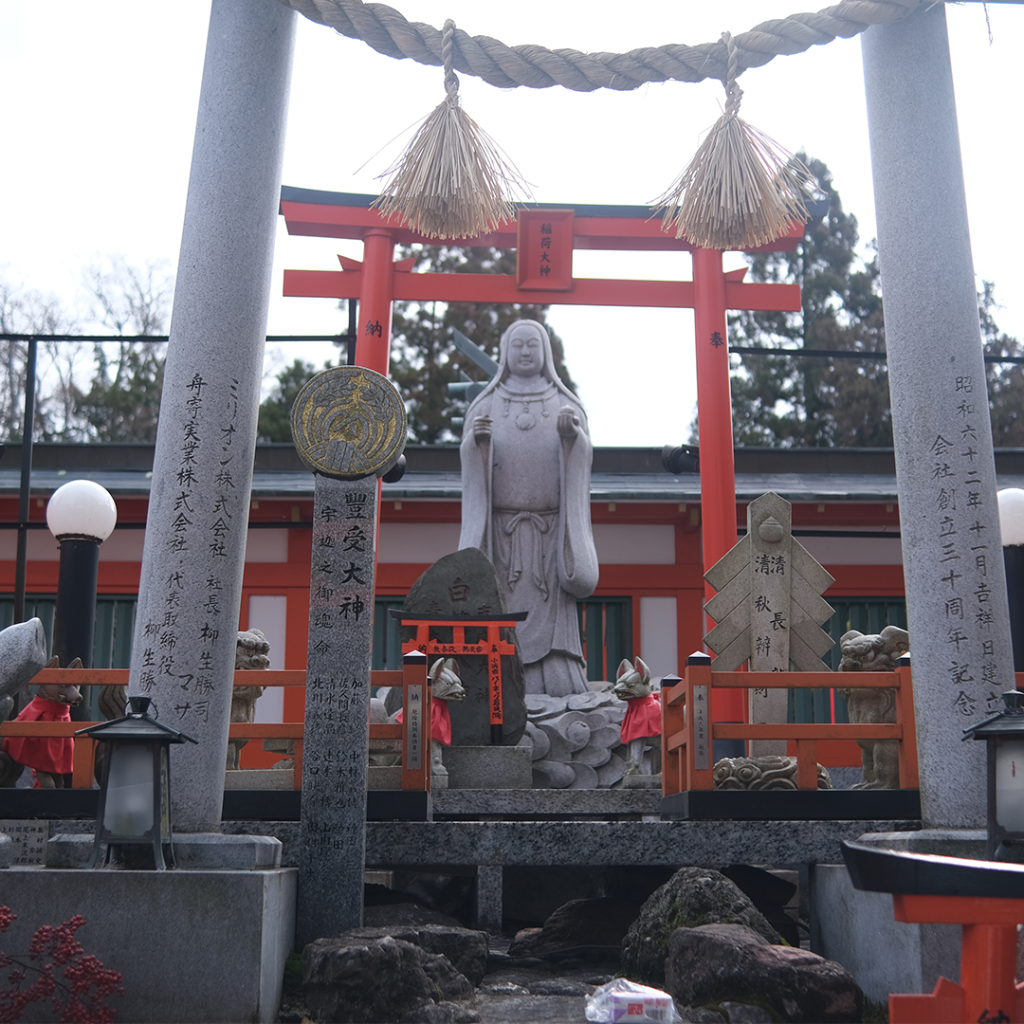
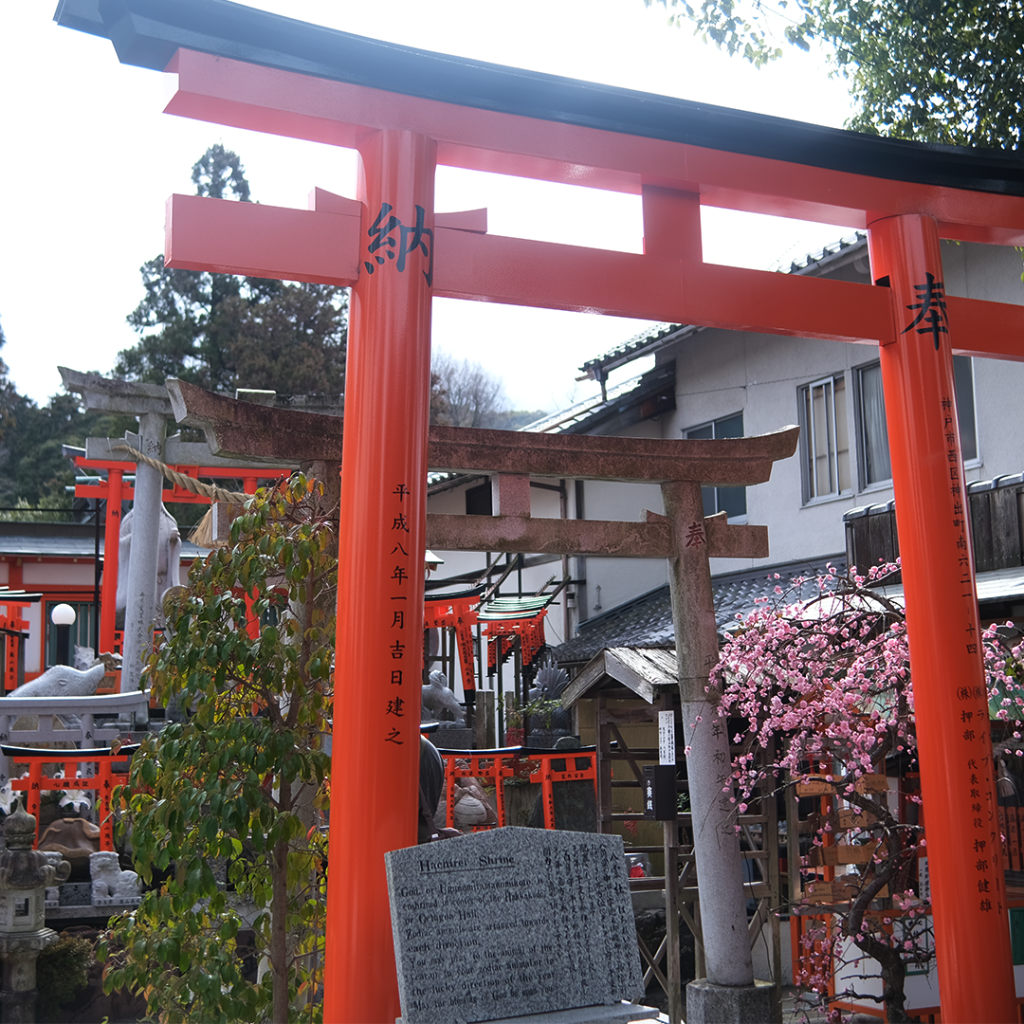
This visit to Fushimi Inari has been a fun wandering trip for us. We used to just go up and down one path. We discovered that there are actually a lot of paths to take and so much more to discover in Fushimi Inari. Going past the touristy spots, we learn more about the beliefs and culture of the people in the area—their reverence for nature and their belief in the gods that live in the woods. It’s just fascinating!
You can never really get lost in Fushimi Inari trails. You just take a different path, end up in a different shrine, and gain a new appreciation for Japanese culture.
